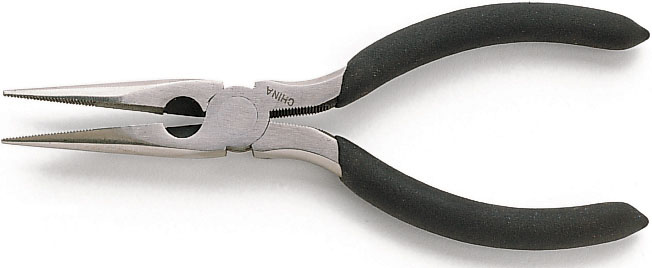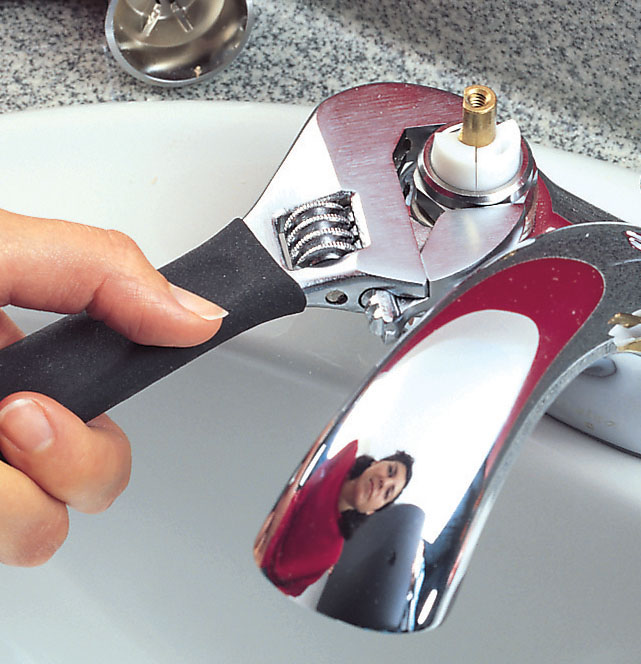
NEEDLE-NOSE PLIERS
→ Adjustable wrench Open the adjustable wrench by turning the screw mechanism. This will open the jaw of the wrench. Make sure it is open a bit more than the size of the nut. Slip the open jaw over the nut and turn the screw mechanism so that it clamps tightly around the nut. Turn in a clockwise direction to tighten it, or counter-clockwise to loosen it. Remove the wrench by loosening the screw mechanism. (Never use adjustables where a lot of twisting force is required. They’ll break or slip off bolt heads if you apply too much force.)
→ Combination wrenches These wrenches have two different ends—a U-shaped open end and an enclosed “box end.” The box end slips over the top of nuts and bolts, the open end slips in from the side.
→ Socket wrench set All sets include a wrench handle, an assortment of detachable sockets (sized to fit different nuts and bolts) and a couple of extensions. These snap in place between the wrench handle and sockets, extending the reach of the tool into deeper locations.

NEEDLE-NOSE PLIERS
→ Needle-nose pliers Needle-nose pliers are finesse tools that let you sneak into confined spaces and grab things that are too small for your fingers or bend wire. They come in both regular and curved-jaw styles.
→ Slip-joint pliers These adjust to two or more positions to accommodate different-size work. Combination jaws grip flat or curved objects. Some models include a crimper.
→ Locking pliers Generically called “vise grips,” they come together like a pair of regular pliers as you begin to squeeze them, but they lock shut when closed all the way. They are sold in a huge variety of sizes and jaw styles.
→ Channel-lock pliers They use an adjustable jaw design to grip various sizes of round, hexagonal or flat objects. The width of their closed jaws ranges from zero to 4 inches, depending on the size of pliers.
